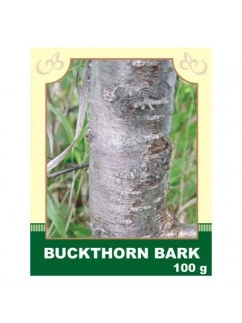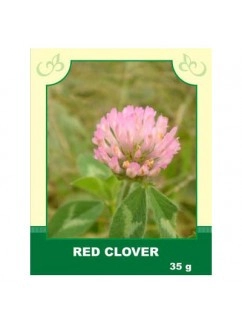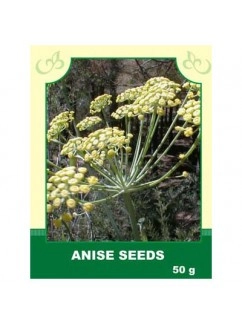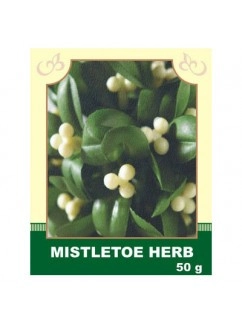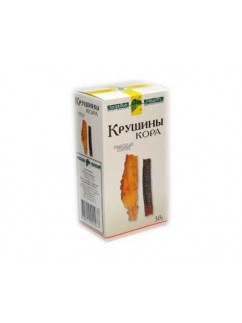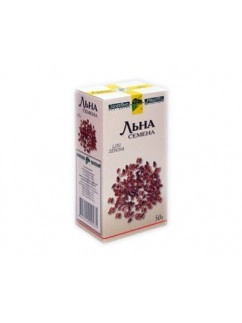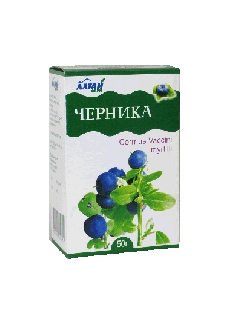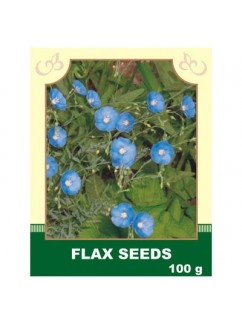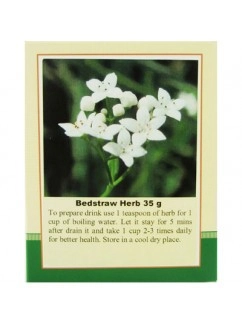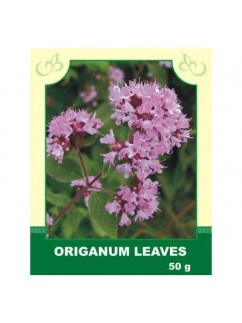Herbs
Internally, it is used for habitual constipation, spastic colitis, hemorrhoids, and anal fissures, especially during pregnancy.
Method of application and dosage: Pour 2 tablespoons of raw material into 200 ml of boiling water, heat on a water bath for 30 minutes, infuse for 10 minutes at room temperature, strain, squeezing the vegetable raw material. Bring the resulting infusion to the original volume. Take 1/2 cup orally at night.
Externally, a strong decoction of the cherry bark is used in the treatment of scabies, especially in children.
Contraindications: individual intolerance, in case of severe kidney dysfunction, and inflammatory processes in the intestines. Prolonged use may lead to habituation.
$6.99
Description.Today, however, it's highly recommended as one of the herbs of choice when it comes to cleansing/detox programs, due to its gentle yet thorough cleansing action and its ability to quickly flush toxins from the body. The nutritious Red Clover blossoms also boast a wide array of nutrients including, calcium, magnesium, molybdenum, zinc, and vitamin c, to name just a few. All these serve to support immune health, promote healthy skin, and acts as a revitalizing herbal tonic to boost overall health & vitality. Promotes healthy blood & lymphatic system; supports healthy liver function; supports healthy estrogen levels (menopausal health); supports immune system; herbal tonic; gentle diuretic; respiratory health. Use. Several studies of a proprietary extract of red clover isoflavones suggest that it may significantly reduce hot flashes in menopausal women. The largest study, however, showed no such effect. Menopause increases a woman's risk for developing osteoporosis (significant bone loss). Some studies suggest that a proprietary extract of red clover isoflavones may slow bone loss and even boost bone mineral density in pre- and perimenopausal women, but the evidence is preliminary. Traditionally, red clover ointments have been applied to the skin to treat psoriasis, eczema, and other rashes. Red clover also has a history of use as a cough remedy for children. It has also been reported that red clover can be used for therapeutic purposes for coughs, bronchitis, eczema, sores, eyes inflammations, scrofula and can be gargled for mouth ulcers and sore throats.
Attention! Before using any herbal products, make sure that you have full knowledge of how the herb works and any adverse reaction it may cause.$6.99
Description. In ancient Chinese as well as traditional Indian system of medicine, anise has assumed a very popular stature. Anise seeds are rich in volatile oil, flavonoids and other important nutrients. Anis actions are disinfectant, anti-inflammatory, spasmolytic, expectorant and antiviral. Anise seeds stimulate lactation, and are considered to be a mild diuretic. Moreover, Anise is a mild antiparasitic and its leaves can be used to treat digestive problems, relieve toothache. Anise can be used to relieve menstrual cramps. Use. Anise has a long history of medical, magical, and culinary use. Anise has also been used for centuries as an agent for relief of coughs and colds. It is still used widely today as a digestive aid and anti-flatulence agent. After taking anise preparations digestion improves, constipations stop and the work of gastrointestinal tract normalizes. Indeed, science has proven that the essential oils in the seeds do have expectorant properties. A tea can be made for relief from cough and congestion. Externally, Anise tea can be wrapped in a warm cloth and used as a compress for eye pain. Try dropping a few seeds in a glass of warm milk before bed to prevent insomnia. Lastly, Anise seeds can be chewed in the morning for an all-day mouth freshener.
Attention! Before using any herbal products, make sure that you have full knowledge of how the herb works and any adverse reaction it may cause.$6.99Internal use:
Take mistletoe infusion internally for hypertension, arteriosclerosis, dizziness, seizures, epileptic seizures, hysteria, headaches, pulmonary and uterine bleeding. Mistletoe's aqueous infusion reduces blood pressure, enhances heart activity, dilates blood vessels, and reduces the excitability of the central nervous system, increasing overall vitality.
Application and dosage: Put 1 tablespoon of mistletoe in a thermos and pour 250 ml of boiling water, infuse for 30 minutes. Take 1/3 cup three times a day before meals.
External use: Used for rinsing and sitz baths for hemorrhoids. An infusion is used for washes and compresses on chronically non-healing wounds, ulcers, and abscesses. For baths, take 60 g of raw material per 1 liter of water, boil for 10-15 minutes over low heat, and infuse for 6-8 hours.
Contraindications: Individual intolerance, pregnancy.
$6.99- Buckthorn bark has been used medicinally since at least the 1600s, when it was listed in a primary medical reference called the London Pharmacopeia. Although most herbs have had a wide variety of traditional uses, later refined to a single or a few proven benefits, buckthorn bark throughout its history has been consistently used to relieve one ailment: constipation and its by-products (hemorrhoids and anal irritation). Buckthorn bark contains compounds called anthraquinones, which have a strong purgative, laxative effect on the body. Because these compounds are powerful, before being processed into laxative products the bark is aged for a year, or heated and dried. Buckthorn bark has laxative and cathartic properties.$6.99
Internally taken as an expectorant for bronchitis; as an enveloping, anti-inflammatory agent for gastritis, colitis, stomach ulcer, and duodenal ulcer; for inflammation of the urinary tract (pyelitis and cystitis).
Method of application and dosage: 1 tablespoon of seeds is poured with 200 ml of boiling water. Stir for 15 minutes, strain, take in a warm form, 1/4 - 1/2 cup 3-4 times a day, 30 minutes before meals. The course of treatment is 2-3 weeks. Used externally in the form of compresses and poultices for furunculosis, mastitis, abscesses, lichen, eczema, burns, and wounds, for rinsing in the treatment of mouth ulcers.
Contraindications: individual intolerance, cholecystitis, keratitis, acute intestinal dysfunction. Prolonged use is not recommended.
$7.99Internal use: Taken for gastric and intestinal catarrhs with reduced acidity of gastric juice, stomach upset, diarrhea, and chronic constipation, spasms and pains in the stomach and intestines, kidney and bladder stones, gout, and rheumatism. Particularly effective for diarrhea in children and acute enterocolitis in adults. Bilberry berries enhance sharpness of vision, provide an increase in the field of vision, and reduce eye fatigue from prolonged work under artificial light.
Method of application and dosage: 3-4 teaspoons of berries are poured with 400 ml of boiling water, infused for 2-3 hours, and taken in 1/4 cup 5-6 times a day.
External use: Infusion is used for enemas in case of hemorrhoidal bleeding, eczema, pimples, and burns. 1-2 teaspoons of berries are poured with 200 ml of boiling water, infused for 15 minutes, strained, squeezed out, and used for rinsing, lotions, and enemas.
Contraindications: Individual intolerance.
$6.99
Description. The history of flax seeds therapeutic use dates back to the times of Hippocrates. In his book Corpus Hippocraticum he described beneficial effect of flax seeds on human organism. Flax seed provides nutritious oils required for good body functioning. It is best taken as the ground seed, especially over long periods of time. Rich in alpha-linolenic acid, one to three tablespoons a day can help to protect the heart and blood vessels and promote healthy bowel evacuation for prevention of toxic accumulation. It is high in mucilage, which helps to protect the entire digestive tract, respiratory tract and bile duct. The ground seed can be added to cereal or muesli. Water intake should be increased, as the seed absorbs liquid. Use. These are some positive effects of flax seeds on health: 1.Lowered blood cholesterol levels. 2. Lowered high blood pressure. 3. Increased energy, vitality, and stamina. 4. Increased sense of calmness under stress. 5. Reduced threat of blood clots. 6. Protection against cancers, particularly hormone sensitive cancers such as breast and prostate. 7. Better regulation of blood sugar levels. 8. Eases inflammatory tissue conditions, including arthritis. 9. Alleviation of dry skin, eczema and psoriasis. 10. Enhanced immune system. 11. Increased metabolic rate with a positive impact on weight management. 12. Helps with Attention Deficit Disorder. 13. Natural laxative (promotes digestion). 14. Improves function of kidney and helps remove liquid from body.
Attention! Before using any herbal products, make sure that you have full knowledge of how the herb works and any adverse reaction it may cause.$6.99Internally, it is taken as an excellent remedy against kidney diseases. It possesses astringent, diuretic, hemostatic, "blood-purifying," anti-inflammatory, analgesic, and wound-healing properties, with the ability to calm the nervous system. The primary action of knotgrass is diuretic.
Method of application and dosage: Steep 1 tablespoon for 4 hours in 2 cups of boiling water, strain. Take 1/2 cup 3-4 times a day before meals. A stronger infusion can be used for baths and washing in skin diseases and wounds.
Externally, the infusion of the herb is used for baths, washing, lotions, and compresses for jaundice, skin rashes, boils, furuncles, wounds, and ulcers.
Contraindications: Individual intolerance.
$6.99
Description. Oregano herb contains volatile oils, tannins, ascorbic acid. Oregano is usually thought of as a culinary herb, but it has been used medicinally for thousands of years. Oregano is a powerful antiseptic; it also has calming, diuretic, cholagogic properties. Use. Oregano is very useful for indigestion, bloating, flatulence, coughs, urinary problems, bronchial problems, headaches, swollen glands, and to promote menstruation. It is also used to relieve fevers, diarrhea, vomiting, and jaundice. Unsweetened tea can be used as a gargle or mouthwash. Externally, Oregano leaves can be pounded into a paste. This paste can then be used for pain from rheumatism, swelling, itching, aching muscles, and sores. For tired joints and muscles, put a handful of Oregano leaves in a coffee filter, mesh bag, or cheesecloth bag and run steaming bath water over it. Allow it to steep in the tub with you as you relax in the warm, fragrant water.
Attention! Do not take oregano while being pregnant.
Attention! Before using any herbal products, make sure that you have full knowledge of how the herb works and any adverse reaction it may cause.$6.99


